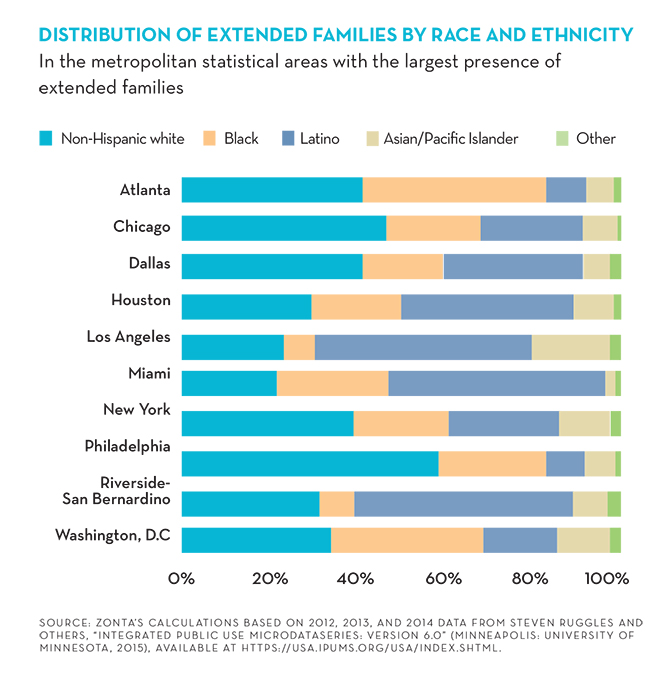According to a recent study conducted by Michela Zonta for The Center for American Progress, the number and size of households that are larger than the typical nuclear family have increased.
For much of the middle of the 20th Century, nuclear families – married couples with single children under the age of 18 – were the most common household demographic. However, just as the population has changed (with more racial and ethnic diversity), so has the composition of those households.

Examples of extended families include: families with adult children returning to the nest for financial support; families taking care of a disabled or widowed parent; and families that have taken in siblings or other relatives including grandchildren. According to the Center for American Progress report, the U.S. population living in extended families increased from 58 million in 2001 to 85 million in 2014 and represents 17 percent of all households.
As American households undergo these demographic changes – including the aging of the Baby Boomers and the increasing presence of Millennials in urban areas – there is a growing market of consumers looking for homes that can accommodate extended and multi-generational families.

The study points out that extended families occur across different income groups and can take a variety of forms. Many come from cultural backgrounds in which home-sharing is the norm, especially during the immigration process, and others arise out of emergency situations, taking care of an older relative, or needing childcare assistance.
Furthermore, the study notes that as life expectancy continues to rise, many seniors fear they might outlive their savings and opt for living with relatives. Similarly, with divorce rates increasing, new extended family households are formed as the result of remarriages and stepchildren. Another factor for the uptick in extended families is the ability to pool resources to afford a larger or better quality home or neighborhood.
According to the research compiled by Michela Zonta, the housing needs of the increasing number of extended families are not being fully met by the current housing market. She reports that developers are devoting more attention to this demographic and several (Lennar, Maracay Homes, Standard Pacific Homes, and Franciscus Homes) are constructing housing to meet the needs of extended and multigenerational families by providing amenities such as multiple separate entries; a separate laundry and kitchenette; a direct-entry private full bath; and a separate living room and master bedroom.





